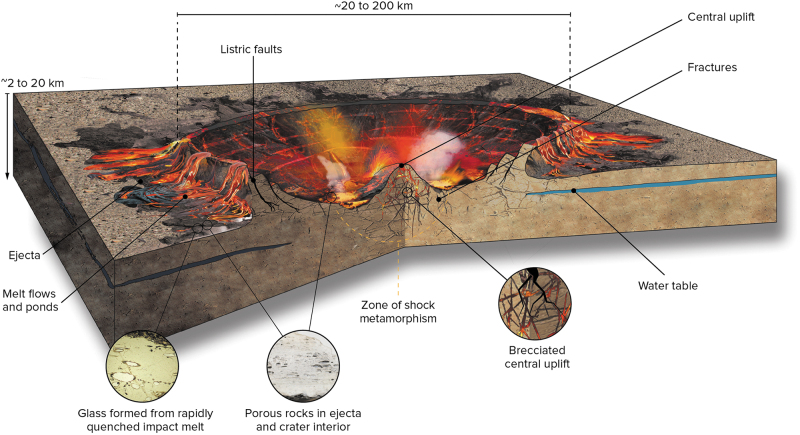FIG. 4.
Artistic rendition of a typical complex impact crater at end of thermobaric phase. At this time, the hydrosphere remains severely disrupted, and the crater interior is filled with impact melt deposits that are superheated to temperatures over 2300°C. Ponds and flows of hot impact melt also occur in patches on top of the ballistic impact ejecta deposits in the crater exterior. The target rocks inside the crater are heavily fractured and shock metamorphosed with shock pressures increasing toward the center.

